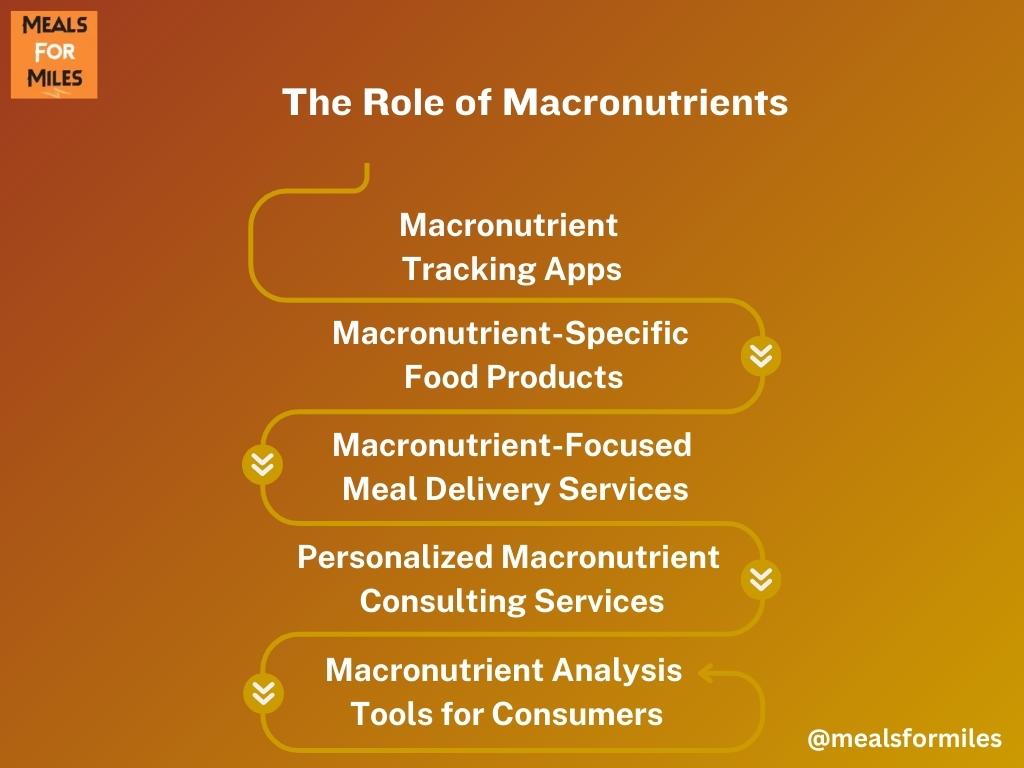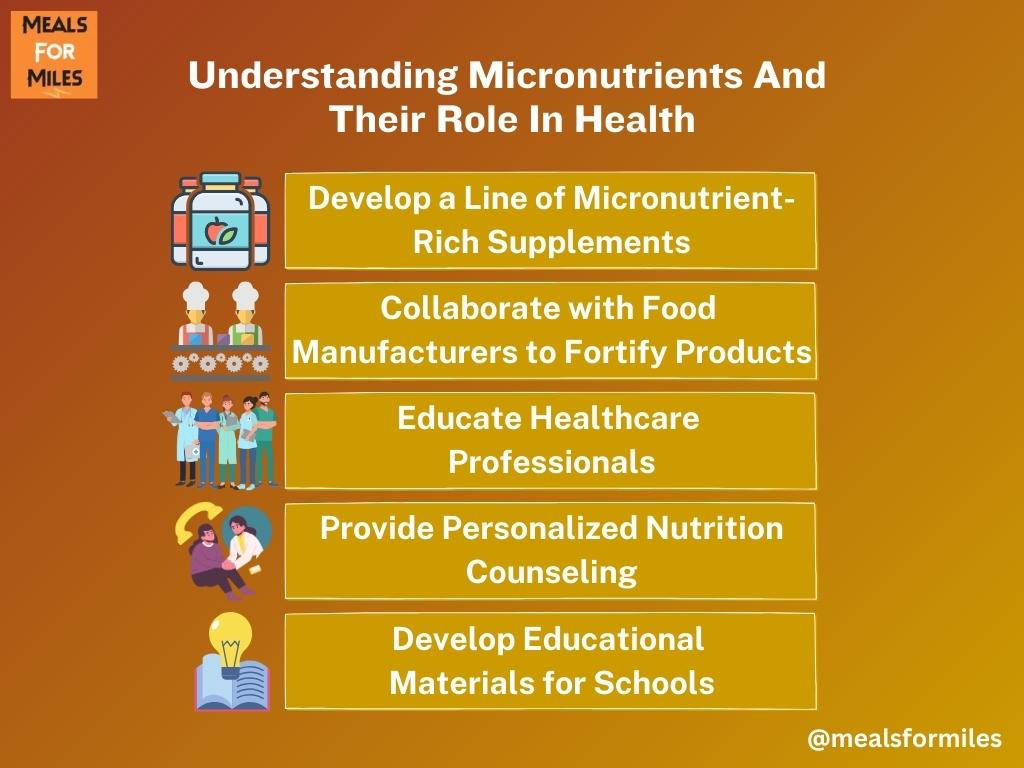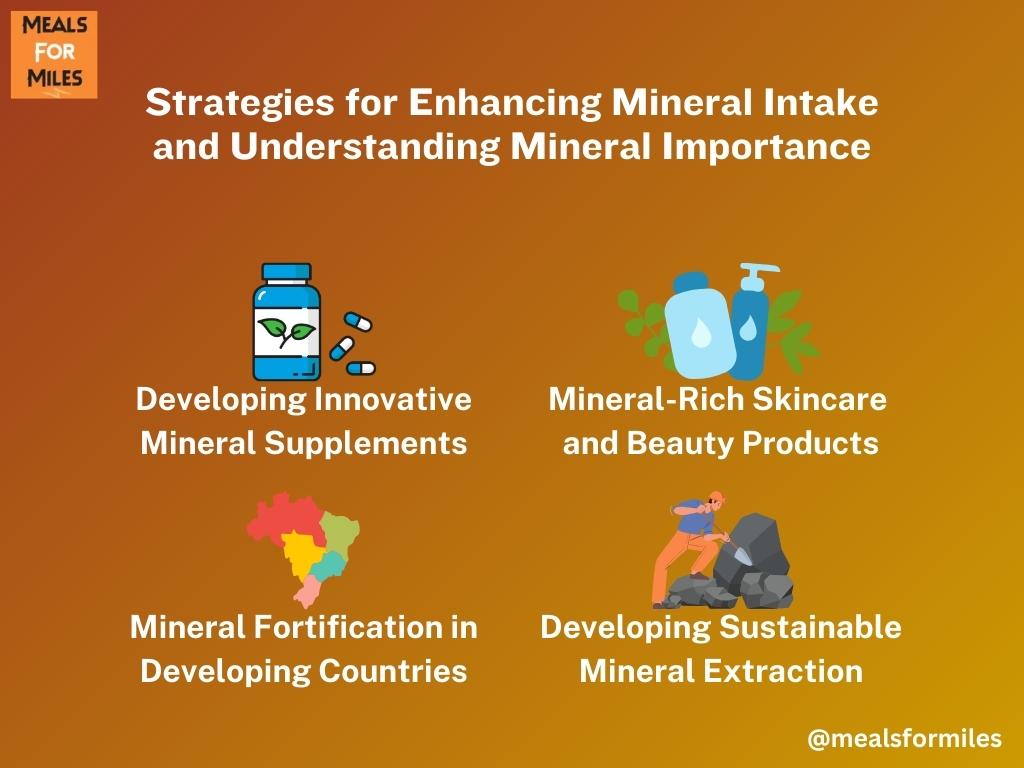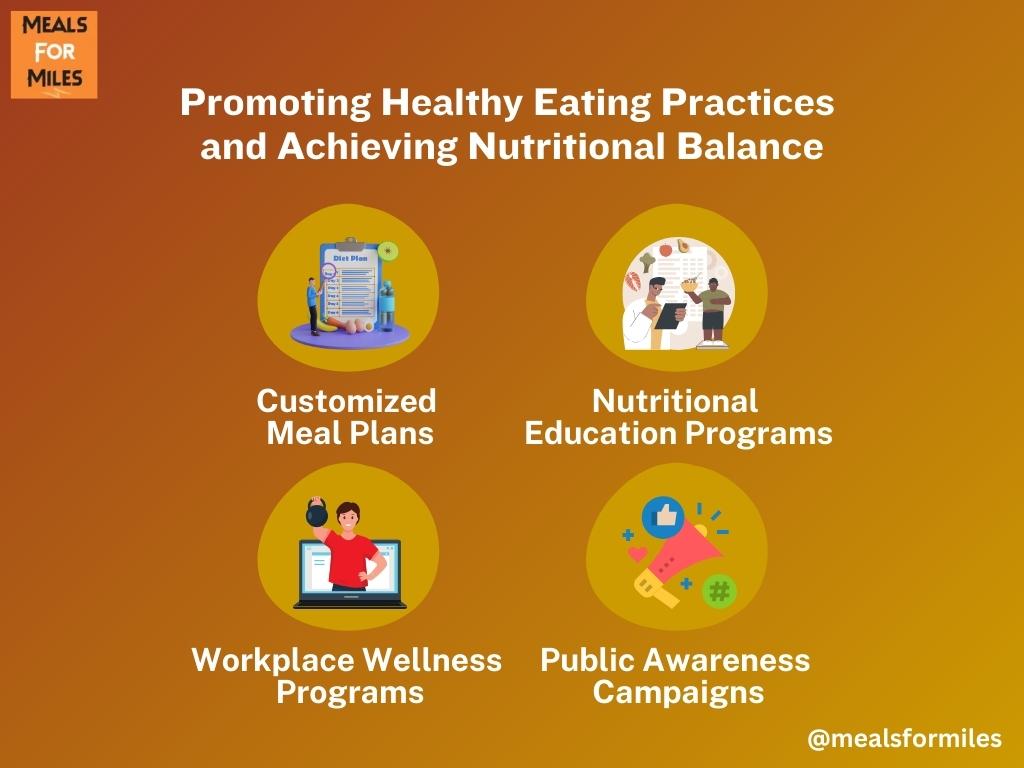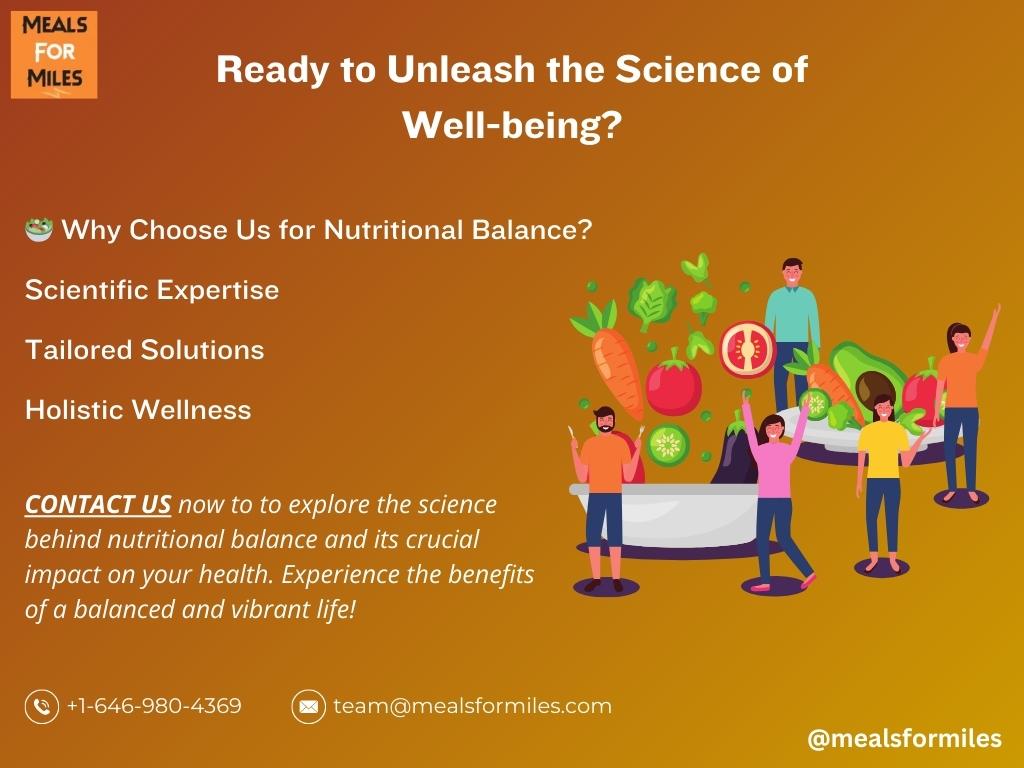Are you ready to take control of your health through balanced nutrition?
Our services and products are designed to guide you on your journey to nutritional balance and well-being. Whether you’re seeking personalized meal plans, expert guidance, or high-quality supplements, we have the tools to help you achieve your health goals.
Nutritional balance is crucial for overall health. It involves consuming a variety of foods from all food groups, ensuring an adequate intake of macronutrients (carbohydrates, proteins, fats) and micronutrients (vitamins, minerals). Macronutrients provide energy and play vital roles in the body, while micronutrients support various bodily functions.
Achieving the right balance depends on factors like age, activity level, and health goals. Healthy eating practices, such as choosing whole foods and avoiding processed items, are essential. Poor nutrition can lead to various health issues, emphasizing the importance of balanced eating for a fulfilling and healthy life.
Table of Contents
- Introduction to Nutritional Balance
- The Role of Macronutrients
- Balancing Macronutrients For Optimal Health
- Understanding Micronutrients And Their Role In Health
- Vitamins: Types, Benefits, And Sources
- Minerals: Types, Benefits, And Sources
- How Much Of Each Nutrient Do We Need?
- Healthy Eating Practices For Achieving Nutritional Balance
- The Impact Of Poor Nutrition On Your Health
- Final Thoughts On The Science Behind Nutritional Balance
Introduction to Nutritional Balance
Nutritional balance is the concept of getting the right amount of macronutrients and micronutrients in your diet. This means eating a variety of foods from all five food groups, including fruits, vegetables, grains, proteins, and dairy. Eating a balanced diet provides your body with the necessary building blocks for optimal health and wellness. Nutritional balance is essential for proper growth and development, as well as disease prevention. It’s also important for managing energy levels throughout the day. In this article, we will explore the science behind nutritional balance and why it matters for your health.
The Role of Macronutrients
Macronutrients are nutrients that give our bodies energy in the form of calories. The three main macronutrients are carbohydrates, proteins, and fats, each with their own specific caloric values. Carbohydrates provide immediate energy, proteins are used for growth and repair, and fats contribute to hormone production and cell membrane formation.
Here are the 10 Innovative Opportunities in the Macronutrient Industry:
- Macronutrient-Specific Food Products: Develop specialized food products that cater to specific macronutrient needs, such as creating a range of low-carb, high-protein snacks for fitness enthusiasts or high-fat, low-carb options for those following a ketogenic diet.
- Macronutrient Tracking Apps: Create mobile applications that help users track their macronutrient intake and provide personalized recommendations. These apps could also include features like meal planning, recipe suggestions, and progress tracking to assist individuals in meeting their specific macronutrient goals.
- Macronutrient Education Programs: Collaborate with schools, healthcare professionals, and fitness centers to develop educational programs on macronutrients. This could involve workshops, seminars, or online courses that educate people about the importance of macronutrients, their functions, and how to incorporate them into a balanced diet.
- Macronutrient Testing Kits: Design at-home testing kits that allow individuals to measure their macronutrient levels. These kits could provide insights into whether someone is consuming an appropriate balance of macronutrients and offer suggestions for dietary adjustments to optimize their health and wellness.
- Macronutrient-Infused Functional Beverages: Develop functional beverages fortified with specific macronutrients, such as protein shakes, energy drinks with added carbohydrates, or meal replacement drinks with a balanced macronutrient profile. These products could appeal to individuals seeking convenient and targeted nutrient intake.
- Macronutrient-Focused Meal Delivery Services: Launch meal delivery services that offer pre-prepared meals with specific macronutrient ratios. These services could cater to various dietary preferences, such as vegetarian, low-carb, or high-protein, providing customers with convenient and nutritionally balanced options.
- Macronutrient Analysis Tools for Food Manufacturers: Create software or tools that enable food manufacturers to analyze and optimize the macronutrient content of their products. This would help them create healthier options aligned with consumer demands and regulatory guidelines.
- Personalized Macronutrient Consulting Services: Offer consulting services where registered dietitians or nutritionists work with individuals to assess their macronutrient needs and develop personalized meal plans. This could involve regular check-ins, adjustments based on progress, and ongoing support to help clients achieve their health goals.
- Macronutrient-Focused Research and Development: Invest in research and development efforts to better understand the role of macronutrients in human health. This could involve conducting studies to explore the impact of different macronutrient ratios on specific health conditions, such as diabetes or obesity, and developing evidence-based guidelines for macronutrient consumption.
- Macronutrient Analysis Tools for Consumers: Create user-friendly apps or devices that allow consumers to scan food products and instantly receive information about their macronutrient content. This would empower individuals to make informed dietary choices and help them achieve their desired macronutrient balance.
Balancing Macronutrients For Optimal Health
To achieve optimal health, it is important to have a balanced diet that includes all three macronutrients: carbohydrates, protein, and fats. Consuming too much or too little of any one macronutrient can result in deficiencies or imbalances that can negatively impact overall well-being. The Dietary Guidelines for Americans recommend specific percentages of calories from each macronutrient, but other organizations may have different recommendations. It is crucial to choose a ratio that suits your lifestyle. Furthermore, when selecting food sources, prioritize whole grains for carbohydrates, lean meats and fish for protein, and healthy fats like nuts and seeds.
Here are the 10 Strategies for Promoting Macronutrient Balance and Optimal Health:
- Customized Macronutrient Plans: Develop personalized macronutrient plans based on an individual’s specific health goals, lifestyle, and body composition. This can be done through consultations with registered dietitians or nutritionists who can analyze an individual’s needs and create a tailored plan.
- Meal Delivery Services: Collaborate with meal delivery services to create pre-packaged meals that are nutritionally balanced in terms of macronutrients. These meals can be conveniently delivered to customers’ doorsteps, ensuring they are getting the right proportions of carbohydrates, protein, and fats without having to worry about meal planning and preparation.
- Mobile Apps and Online Tools: Develop mobile apps or online tools that allow users to track their macronutrient intake easily. These tools can provide suggestions on meal options based on individual goals and preferences, making it easier for people to maintain a balanced diet.
- Education and Awareness Programs: Organize workshops, seminars, and online courses to educate the general public about the importance of macronutrient balance for optimal health. These programs can provide information on how to identify and choose macronutrient-rich foods, read food labels, and make mindful eating choices.
- Partnership with Fitness Centers: Collaborate with fitness centers and gyms to offer nutrition counseling services to their members. This can help individuals achieve their fitness goals by providing guidance on how to balance macronutrients for energy, muscle growth, and recovery.
- Collaboration with Food Manufacturers: Work with food manufacturers to develop and promote products that have optimal macronutrient ratios. This can include snacks, meal replacements, and functional foods that are designed to provide the right balance of carbohydrates, protein, and fats.
- Research and Development: Invest in research and development to understand the impact of macronutrient balance on various health conditions. This can help industry experts stay updated with the latest scientific findings and provide evidence-based recommendations to their clients.
- Workplace Wellness Programs: Partner with corporate wellness programs to offer educational sessions and resources on macronutrient balance for employees. This can help improve the overall health and productivity of the workforce.
- Collaboration with Healthcare Professionals: Collaborate with healthcare professionals, such as doctors and nurses, to integrate macronutrient balance education into their patient care plans. This can help patients better manage chronic conditions and promote overall wellness.
- Social Media Influencer Partnerships: Collaborate with social media influencers who specialize in nutrition and wellness to promote the importance of macronutrient balance. This can help reach a larger audience and create awareness about the role of macronutrients in achieving optimal health.
Overall, the key is to provide education, resources, and convenient solutions to help individuals achieve and maintain a balanced macronutrient intake for optimal health.
Understanding Micronutrients And Their Role In Health
Micronutrients like vitamins and minerals don’t provide us with direct energy, but they do assist many vital bodily functions, such as helping regulate hormones, metabolism, immunity, digestion, and reproduction. They also help us absorb other essential nutrients, so having an adequate supply is crucial. As such, it’s important we get enough micronutrient-dense foods into our diets.
Here are the 10 Strategies for Promoting Micronutrient Awareness and Adequate Intake:
- Develop a Line of Micronutrient-Rich Supplements: With the growing awareness of the importance of micronutrients, there is a market opportunity to create a range of supplements that specifically target the deficiencies commonly seen in the population. These could be tailored for different age groups, lifestyles, and specific health conditions.
- Collaborate with Food Manufacturers to Fortify Products: Partnering with food manufacturers to fortify commonly consumed products such as bread, cereals, and beverages with essential micronutrients can help increase their availability in the diet. This collaboration can also involve developing guidelines and standards for fortification to ensure optimal nutrient content.
- Educate Healthcare Professionals: Organize workshops and seminars for healthcare professionals to enhance their understanding of micronutrients and their role in maintaining health. This education could include information on the recommended daily intake, common deficiencies, and the impact of micronutrient imbalances on various health conditions.
- Provide Personalized Nutrition Counseling: Establish a consultancy service that offers personalized nutrition counseling, focusing on assessing individual micronutrient needs through blood tests and dietary analysis. This service can help individuals identify deficiencies and develop customized meal plans to address their specific nutrient requirements.
- Develop Educational Materials for Schools: Collaborate with educational institutions to develop age-appropriate educational materials on micronutrients and their role in health. This can include interactive activities, informative posters, and nutrition-focused curriculum modules to create awareness and encourage healthy eating habits from a young age.
- Conduct Research on Micronutrient Bioavailability: Invest in research to better understand the bioavailability of micronutrients from different food sources. This can help identify the most effective ways to optimize nutrient absorption and develop innovative food processing techniques that preserve or enhance micronutrient content.
- Establish Partnerships with Farming Communities: Collaborate with local farmers to promote the cultivation of micronutrient-rich crops. This can be done through providing education, technical support, and financial incentives to encourage farmers to grow diverse crops with high micronutrient content. The resulting produce can then be marketed as “micronutrient-enriched” or “nutrient-dense” to raise consumer awareness.
- Advocate for Policy Changes: Work with government agencies and health organizations to advocate for policies that prioritize the inclusion of micronutrient-rich foods in public nutrition programs and school meals. This could involve lobbying for increased funding, revised dietary guidelines, and regulations to ensure the availability and affordability of nutrient-dense foods.
- Develop Apps or Online Platforms: Create user-friendly mobile apps or online platforms that provide information on the micronutrient content of various foods, personalized meal planning, and tracking tools for monitoring nutrient intake. These tools can help individuals make informed dietary choices and track their progress towards meeting their micronutrient needs.
- Collaborate with Food Delivery Services: Partner with food delivery services to offer meal options that are specifically designed to be rich in micronutrients. This can cater to individuals who may struggle to incorporate nutrient-dense foods into their diets due to time constraints or lack of cooking skills.
Vitamins: Types, Benefits, And Sources
Vitamins serve several purposes within our bodies. They act as coenzymes, antioxidants, help form red blood cells, protect against infection, etc. There are two types – fat-soluble vitamins (A, D, E, K) stored in fatty tissues, and water-soluble vitamins (B, C) found mainly within fluids. Fruits, vegetables, nuts, legumes, whole grains, dairy, meat, seafood, eggs, fortified products, and supplements are good sources.
Here are the 10 Innovative Approaches to Enhancing Vitamin Accessibility and Utilization:
- Customized Vitamin Subscriptions: With the growing popularity of personalized health and wellness, companies could offer customized vitamin subscriptions based on an individual’s specific needs and deficiencies. This could involve conducting genetic testing or personalized health assessments to determine the most appropriate vitamins for each person.
- Plant-Based Vitamin Supplements: As the demand for plant-based products continues to rise, there could be a market for plant-based vitamin supplements. These supplements would be derived solely from plant sources, catering to individuals who follow a vegetarian or vegan lifestyle.
- Vitamin-Infused Food and Beverages: With the increasing interest in functional foods and beverages, manufacturers could develop vitamin-infused products that provide a convenient way for consumers to meet their daily vitamin requirements. This could include vitamin-enriched juices, snacks, or even fortified water.
- Nutraceuticals: Nutraceuticals are products that combine nutritional and pharmaceutical properties. In the case of vitamins, this could involve creating targeted vitamin formulations that address specific health concerns, such as improving cognitive function, boosting immunity, or promoting healthy aging.
- Vitamin Patches: For individuals who struggle with remembering to take daily supplements or have difficulty swallowing pills, vitamin patches could be a convenient alternative. These patches would deliver a controlled release of vitamins through the skin, ensuring a constant supply throughout the day.
- Vitamin-Focused Wellness Retreats: Wellness retreats focused specifically on providing education, guidance, and immersive experiences around vitamins could become popular. These retreats could offer personalized consultations, workshops, and activities centered on optimizing vitamin intake and overall health.
- Vitamin Testing Services: As more people become aware of the importance of vitamins, there may be a growing demand for vitamin testing services. These services would involve analyzing an individual’s vitamin levels through blood or urine samples and providing personalized recommendations for supplementation or dietary changes.
- Vitamin Education Programs for Schools: To promote healthy habits from an early age, educational programs could be developed to teach children about the importance of vitamins and how to incorporate them into their diets. These programs could include interactive lessons, hands-on activities, and collaborations with nutrition experts.
- Vitamin-Focused Beauty Products: Taking the connection between nutrition and beauty into consideration, beauty companies could develop vitamin-infused skincare and haircare products. These products would aim to enhance the health and appearance of the skin and hair by providing essential vitamins topically.
- Vitamin Research and Development: With ongoing advancements in scientific research, there will always be room for further exploration and development of new vitamins or vitamin formulations. This could involve discovering new sources of vitamins, improving bioavailability, or studying the potential benefits of lesser-known vitamins.
Minerals: Types, Benefits, And Sources
Minerals, like vitamins, are essential for maintaining good bodily function. They include calcium, phosphorus, magnesium, iron, potassium, zinc, iodine, selenium, copper, chromium, fluoride, sodium, manganese, cobalt, molybdenum, and more. These minerals help build strong bones, teeth, and muscles, regulate blood pressure, support nerve impulse transmission, boost the immune system, aid in metabolic reactions, and maintain fluid balance. They also improve oxygen transport, enhance absorption, and contribute to cell division. Minerals can be obtained from various sources such as plant-based foods, legumes, nuts, fruits, vegetables, fortified cereals, seafood, dairy, meat, eggs, grain products, and supplements.
Here are the 10 Strategies for Enhancing Mineral Intake and Understanding Mineral Importance:
- Developing Innovative Mineral Supplements: Focus on creating new and specialized mineral supplements that target specific deficiencies or health concerns. For example, a calcium supplement designed for bone health or an iodine supplement for thyroid function.
- Plant-Based Mineral-Rich Foods: Explore ways to enhance the mineral content of plant-based foods, considering the rising popularity of plant-based diets. This could involve breeding or genetically modifying plants to increase their mineral content or developing plant-based meat alternatives that are fortified with essential minerals.
- Sustainable Mineral Extraction: Develop sustainable and eco-friendly methods of mining and extracting minerals, considering the growing concern about the environmental impact of mineral extraction. This could include researching new extraction techniques, promoting recycling and reuse of minerals, and advocating for responsible mining practices.
- Mineral-Enriched Water and Beverages: Explore the development of mineral-enriched water and other drinks to meet specific health benefits or market them as a convenient way to fulfill daily mineral requirements.
- Education and Awareness Campaigns: Play a role in educating the general public about the importance of minerals, their sources, and benefits. This could involve partnering with health organizations or creating informative campaigns to promote a balanced and mineral-rich diet.
- Mineral Testing and Analysis: Establish a business specializing in testing and analyzing mineral content in food products, supplements, or water sources. This service helps consumers ensure they are getting the right amount of minerals and can be used by food manufacturers to validate nutritional claims.
- Customized Mineral Formulations: Work with healthcare professionals to develop personalized mineral formulations tailored to individual needs. This involves analyzing a person’s mineral levels and creating a specific blend of minerals to address any deficiencies or imbalances.
- Mineral-Rich Skincare and Beauty Products: Develop mineral-rich skincare and beauty products that promote healthy skin, hair, and nails, considering the benefits of minerals such as zinc, copper, and selenium for the skin.
- Mineral Fortification in Developing Countries: Collaborate with organizations and governments to develop programs or initiatives focused on fortifying staple foods with essential minerals in developing countries to combat malnutrition.
- Research and Development: Focus on conducting research to further understand the role of minerals in human health. This could involve investigating the benefits of specific minerals, exploring new sources of minerals, or studying the interactions between minerals and other nutrients.
How Much Of Each Nutrient Do We Need?
When striving towards nutritional balance, figuring out how much of each nutrient you need requires understanding your specific goals. Your age, gender, activity level, body composition, lifestyle, medical history, any existing conditions, and genetic predispositions should all be taken into account. Additionally, some people may need additional supplementation. Always consult with a doctor, registered dietitian, or nutritionist before making major dietary changes.
Here are the 10 Innovations in Personalized Nutritional Guidance and Tracking:
- Personalized Nutrient Assessments: Develop software or apps that allow individuals to input their personal information such as age, gender, activity level, and medical history to generate personalized nutrient recommendations. This can help people understand their specific nutrient needs and guide them towards achieving nutritional balance.
- Nutrient Tracking Devices: Create wearable devices or smart kitchen appliances that track the nutrient content of the food individuals consume. This can provide real-time feedback on nutrient intake and help individuals adjust their diet accordingly.
- Nutrient Testing Services: Establish specialized laboratories that offer comprehensive nutrient testing services. These tests can analyze an individual’s blood or urine samples to identify any nutrient deficiencies or imbalances, providing targeted recommendations to improve nutritional health.
- Genetic Testing for Nutrient Needs: Develop genetic testing kits that analyze an individual’s genetic predispositions related to nutrient metabolism. By understanding an individual’s genetic makeup, personalized nutrient recommendations can be provided to optimize their diet and prevent potential deficiencies.
- Nutrient Profiling for Specific Conditions: Develop databases or algorithms that provide nutrient profiles tailored to specific health conditions such as diabetes, heart disease, or autoimmune disorders. These profiles can guide individuals towards nutrient-dense foods that support their specific condition.
- Nutrient Supplementation Consultancy: Establish consultancy services that provide personalized advice on nutrient supplementation. By considering an individual’s specific goals and health history, experts can recommend appropriate supplements to fill any nutrient gaps.
- Nutrient Education Programs: Collaborate with educational institutions or community centers to develop nutrition education programs. These programs can help people understand their nutrient requirements and how to achieve a balanced diet through workshops, seminars, or online courses.
- Nutrient-Specific Food Products: Develop food products that are specifically designed to meet the recommended nutrient intake for a particular demographic or lifestyle group. For example, convenient and nutrient-dense meal replacements for busy professionals or fortified snacks for athletes.
- Nutrient-Focused Meal Delivery Services: Establish meal delivery services that offer personalized meal plans based on an individual’s nutrient needs. These services can provide convenience while ensuring individuals meet their daily nutrient requirements.
- Nutrient Monitoring Apps: Create smartphone apps that allow individuals to track their nutrient intake and receive real-time feedback on their nutrient balance. These apps can provide personalized recommendations and reminders to help individuals maintain a balanced diet.
Healthy Eating Practices For Achieving Nutritional Balance
Eating nutritious meals, avoiding processed food, limiting added sugar, saturated and trans fats, alcohol, avoiding skipping meals, being aware of portion size should all be part of an optimized nutrition plan. Additionally, choosing organic, non-GMO, plant-based, locally sourced, unrefined, minimally processed, sustainable, seasonal, nutrient-dense whole foods whenever possible will ensure maximum nutrients. All these practices will ensure not only better physical well-being but also mental, emotional, and spiritual benefits as well.
Here are the 10 Strategies for Promoting Healthy Eating Practices and Achieving Nutritional Balance:
- Customized Meal Plans: Develop personalized meal plans for individuals based on their specific nutritional needs, preferences, and goals. Provide a variety of healthy recipes and meal ideas that focus on nutrient-dense foods.
- Nutritional Education Programs: Create educational programs to teach people about the importance of nutritional balance and healthy eating practices. Cover topics such as label reading, understanding macronutrients and micronutrients, and the benefits of eating whole foods.
- Meal Delivery Services: Collaborate with meal delivery companies to offer healthy and balanced meal options that align with recommended practices. Design meals for various dietary requirements, including vegan, gluten-free, or low-carb options.
- Nutrition Coaching: Provide one-on-one coaching sessions to guide individuals in making healthier food choices and adopting sustainable eating habits. Include regular check-ins, goal setting, and ongoing support and motivation.
- Restaurant Partnerships: Work with restaurants and food establishments to develop menu options that adhere to healthy eating practices. Offer more plant-based options, reduce portion sizes, and use organic and locally sourced ingredients.
- Workplace Wellness Programs: Collaborate with companies to implement workplace wellness programs promoting healthy eating practices. Organize nutrition workshops, provide healthy snacks, and offer incentives for employees making positive dietary changes.
- Online Resources and Apps: Develop online platforms or mobile applications providing users access to a wealth of information, including healthy recipes, meal planning tools, interactive nutrition trackers, and grocery shopping tips.
- Collaboration with Healthcare Professionals: Work closely with doctors, dieticians, and healthcare professionals to provide comprehensive nutritional advice to patients, ensuring a holistic approach to overall health and well-being.
- Public Awareness Campaigns: Lead public awareness campaigns educating communities about the benefits of healthy eating practices. Partner with schools, community centers, and local organizations to host workshops, cooking demonstrations, and nutrition-focused events.
- Research and Development: Contribute to ongoing research and development in the field of nutrition to refine and enhance healthy eating practices. Conduct studies on the impact of different dietary patterns, explore new food processing techniques, and identify emerging trends in nutrition.
The Impact Of Poor Nutrition On Your Health
Poor nutrition, either through lack, overconsumption, deficiency, excess, or imbalance, has far-reaching consequences. Malnutrition, nutrient deficiency, obesity, heart disease, diabetes, cancer, digestive disorders, chronic inflammation, joint pain, fatigue, poor sleep, depression, anxiety, weakened immune system, poor cognitive function, premature aging, increased risk of diseases, disability, and death. Just goes to show how powerful what we eat really can be.
Here are the 10 Strategies for Addressing the Impact of Poor Nutrition on Health and Wellness:
- Developing Personalized Nutrition Plans: Focus on creating personalized nutrition plans tailored to individuals’ specific needs and health conditions. This could involve partnering with healthcare professionals, utilizing genetic testing, and incorporating advanced data analysis techniques to optimize nutrition and prevent diseases.
- Education and Awareness Campaigns: Play a crucial role in raising awareness about the impact of poor nutrition on health. This could involve organizing educational campaigns, collaborating with schools and universities, leveraging social media platforms, and developing engaging content to educate the general public about the importance of a balanced diet.
- Nutritional Supplements and Functional Foods: Focus on developing high-quality nutritional supplements and functional foods to address nutrient deficiencies and support overall health. Formulating products with specific combinations of vitamins, minerals, antioxidants, and other bioactive ingredients provides convenient options for individuals to bridge the nutritional gap in their diets.
- Collaboration with Food Industry: Collaborate with food manufacturers, restaurants, and food service providers to improve the nutritional value of their products. Encourage the reduction of added sugars, unhealthy fats, and sodium while increasing the availability of whole grains, fruits, vegetables, and lean proteins to improve public health.
- Workplace Wellness Programs: Develop workplace wellness programs that prioritize employee nutrition by providing healthy food options, organizing cooking classes or nutrition workshops, and offering incentives for employees to make healthier food choices.
- Mental Health and Nutrition Integration: Collaborate with mental health professionals to develop nutrition-focused interventions for individuals with mental health disorders. Identify specific nutrients that support brain health and mood regulation and integrate them into treatment plans.
- Research and Innovation: Invest in research and innovation, focusing on clinical trials, exploring the impact of specific nutrients on health outcomes, and staying updated with the latest scientific findings to inform practices and product development.
- Policy Advocacy: Advocate for policies promoting healthy eating and combating the marketing of unhealthy foods to vulnerable populations, such as children. Work with policymakers to support nutrition education, food labeling, and restrictions on unhealthy food marketing.
- Partnerships with Healthcare Providers: Collaborate with healthcare providers like doctors, dietitians, and nutritionists to provide comprehensive care to individuals. Share research, develop referral networks, and integrate nutrition counseling into healthcare settings for a holistic approach to patient health.
- Technology-Driven Solutions: Leverage technology, such as mobile apps, wearable devices, and AI-powered platforms, to assist individuals in tracking their nutrition, making informed food choices, and receiving personalized recommendations. Drive the development of user-friendly and evidence-based digital tools to improve nutritional outcomes and overall health.
Final Thoughts On The Science Behind Nutritional Balance
Nutrition plays a key role in maintaining, promoting, and restoring optimal health. Everyone, however, has different needs and requirements. Therefore, it’s essential to understand and achieve nutritional balance. That means focusing on variety, quality, and quantity of each meal. Also, keeping track of progress regularly and making adjustments when needed. Doing this along with healthy habits will increase chances of living a long and fulfilling life.
Don’t wait any longer – invest in your health today and experience the benefits of a balanced and vibrant life.
Contact us now to explore our services and products, and start your path to optimal health!


